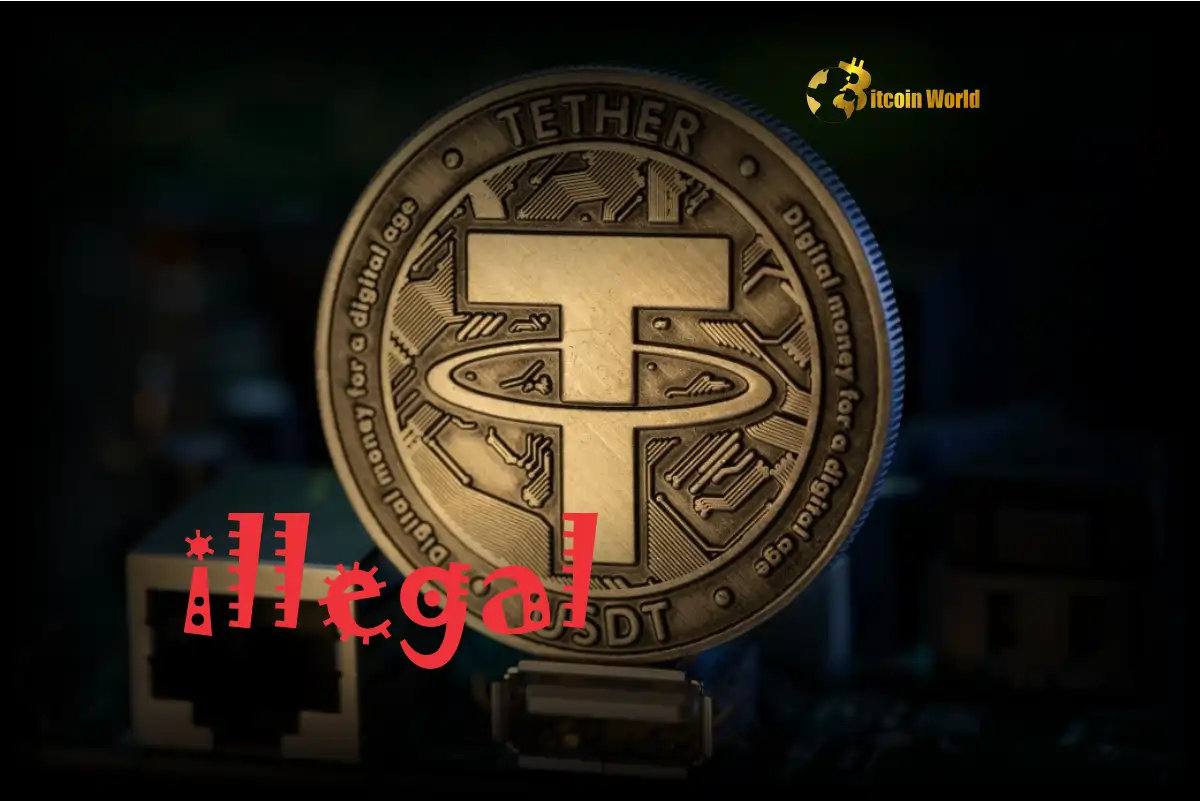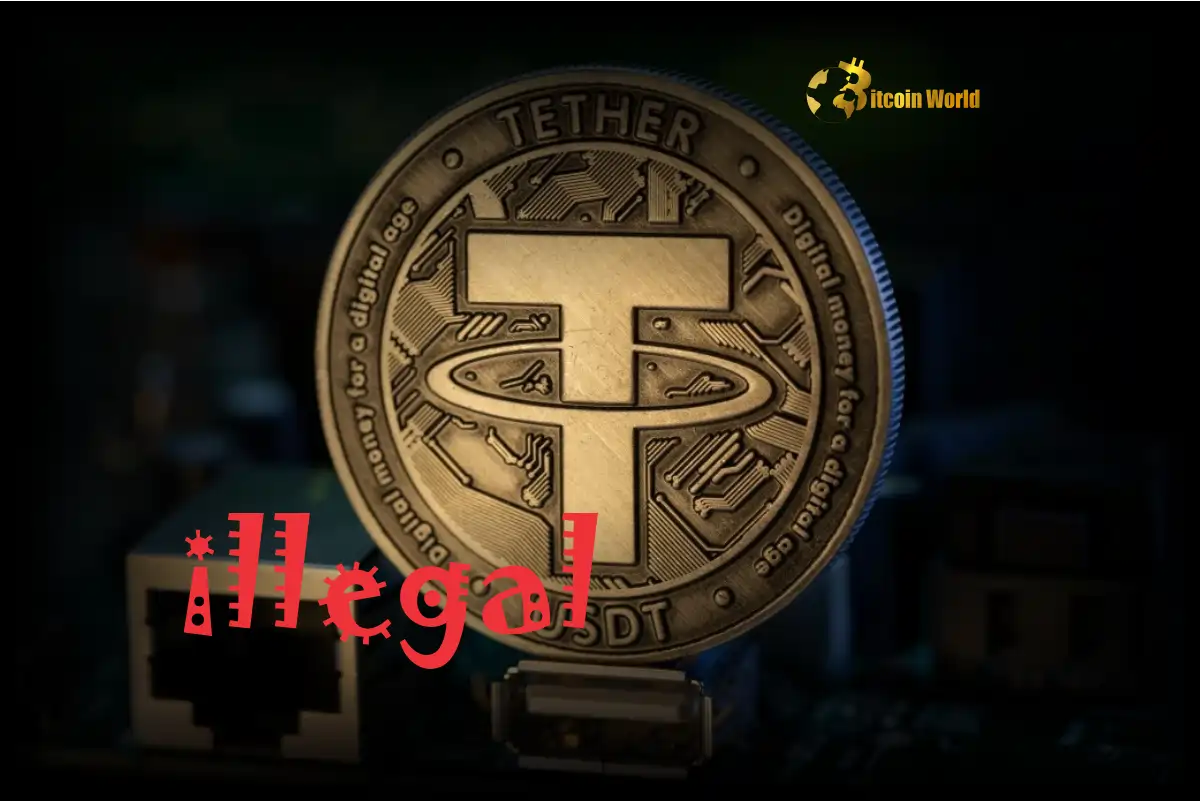BitcoinWorld

Shocking $42M USDT Illegal Money Transfer Ring Busted Between South Korea and Russia
The world of cryptocurrency, while offering incredible potential for innovation and financial freedom, sometimes finds itself entangled in illicit activities. A recent case highlights this, involving a significant USDT illegal money transfer operation that moved millions between South Korea and Russia, bypassing traditional banking systems. This incident serves as a stark reminder of the challenges regulators face in monitoring the flow of digital assets.
What Happened in the South Korea Russia Transfer Scheme?
Authorities in Seoul have uncovered a large-scale operation facilitating illegal money transfers between South Korea Russia. According to reports, two Russian nationals were at the center of this scheme, which allegedly involved moving approximately 58 billion won, equivalent to about $42 million USD, outside of official financial channels.
The core of the operation involved exploiting non-bank services to move funds discreetly. Here’s a breakdown of the reported method:
- Convenience Store Kiosks: The individuals reportedly used cash deposit services available at convenience store kiosks in South Korea. These services often allow users to deposit cash without requiring a traditional bank account or identity verification beyond basic transaction details for smaller amounts.
- Barcode Payments: They allegedly leveraged barcode-based cash payment systems, converting physical cash into a digital format linked to a transaction.
- USDT Conversion: The funds were then converted into the stablecoin USDT (Tether). USDT is popular due to its peg to the US dollar, making it relatively stable compared to volatile cryptocurrencies like Bitcoin, and its wide availability on various exchanges and platforms.
- Transfer and Withdrawal: The USDT was then presumably transferred to recipients in Russia, where it could be converted back into local currency, likely through similar non-bank methods or peer-to-peer exchanges.
Why Use USDT for Illegal Money Transfer?
The choice of USDT in this operation wasn’t random. Stablecoins like USDT offer certain characteristics that can be attractive to those looking to move value outside traditional financial systems:
- Speed and Accessibility: Crypto transactions can be processed relatively quickly, often faster than international wire transfers, especially between countries with complex banking relationships or sanctions.
- Circumvention: By converting funds into USDT, the individuals could bypass strict banking regulations, reporting requirements, and potential scrutiny associated with large international fiat transfers.
- Discretion: While not entirely anonymous, cryptocurrency transactions offer a degree of privacy compared to tracked bank wires, particularly when using non-custodial wallets and services that don’t require extensive KYC (Know Your Customer) procedures.
- Demand: There is significant demand for stablecoins like USDT in various parts of the world, including regions where accessing foreign currency or traditional banking services is difficult.
The suspects reportedly promoted their services on platforms like Telegram, specifically targeting Russian nationals residing in Korea who needed to send money home discreetly. This highlights how readily available digital tools can be repurposed for illicit ends.
The Scale of the Crypto Crime
The reported amount of 58 billion won, or approximately $42 million, moved through this scheme is substantial. It underscores the potential scale that crypto crime can reach when individuals or groups effectively leverage digital assets and exploit loopholes in existing financial controls. The Seoul Customs Office’s investigation suggests this wasn’t a one-off transaction but an ongoing operation facilitating numerous transfers over time.
Challenges and Actionable Insights
This case brings several challenges into focus:
- Regulatory Blind Spots: Non-bank services, like convenience store cash kiosks, when combined with crypto conversions, create blind spots for financial regulators primarily focused on traditional banking channels.
- Monitoring Stablecoins: While stablecoins aim for price stability, their use in facilitating value transfer across borders without traditional intermediaries poses monitoring challenges for authorities combating money laundering and illegal capital flight.
- Cross-Border Cooperation: Investigating and prosecuting such cases requires significant cooperation between law enforcement and financial intelligence units across different countries, which can be complex.
For regulators and the crypto industry, actionable insights include:
- Increasing scrutiny on the intersection of cash-in/cash-out points (like kiosks or certain money transfer agents) and cryptocurrency exchanges or services.
- Developing better tools and frameworks for tracking stablecoin flows, particularly across borders.
- Enhancing international cooperation to share information about suspicious transactions and individuals involved in potential crypto crime.
The case has now been referred to prosecutors, indicating that formal charges are likely to follow. This prosecution will be a key test of how effectively legal systems can address illicit finance schemes that blend traditional cash methods with modern cryptocurrency techniques.
Summary: A Growing Concern at the Intersection of Cash and Crypto
The bust of this $42 million USDT illegal money transfer operation between South Korea and Russia is a significant development. It illustrates a method where individuals exploited non-bank cash services and the flexibility of stablecoins like USDT to move large sums of money illicitly, bypassing banking regulations and controls. As digital assets become more integrated into the global financial landscape, authorities face an ongoing challenge in monitoring and preventing their use in crypto crime while fostering legitimate innovation. This specific incident involving South Korea Russia transfers via convenience stores highlights the evolving nature of financial crime in the digital age.
To learn more about the latest crypto market trends, explore our article on key developments shaping stablecoin adoption and regulation.
This post Shocking $42M USDT Illegal Money Transfer Ring Busted Between South Korea and Russia first appeared on BitcoinWorld and is written by Editorial Team




